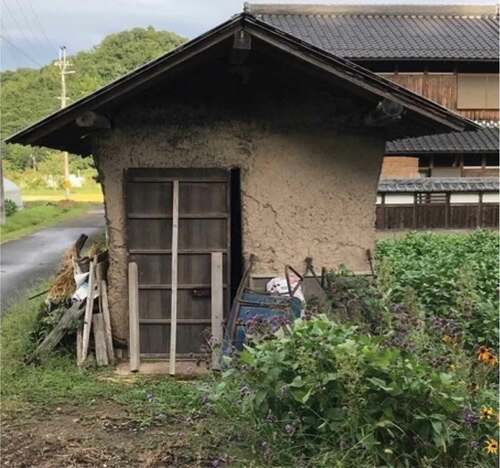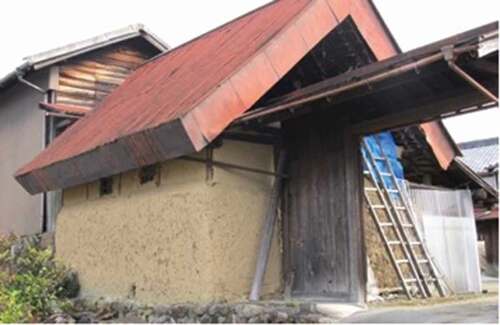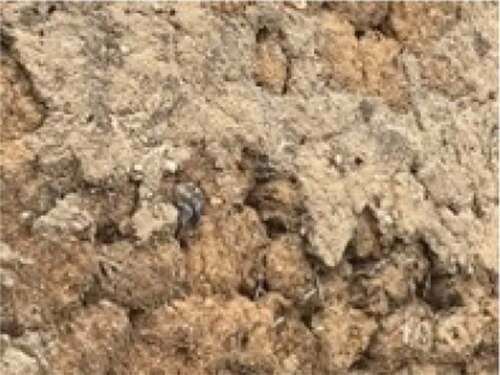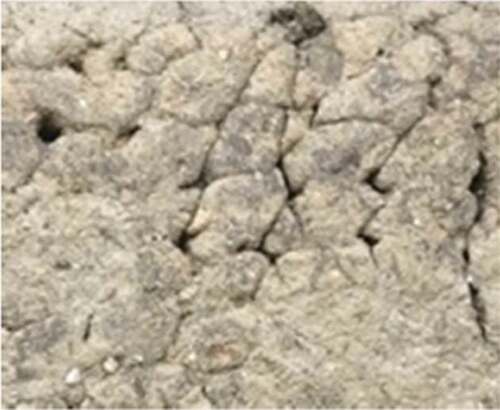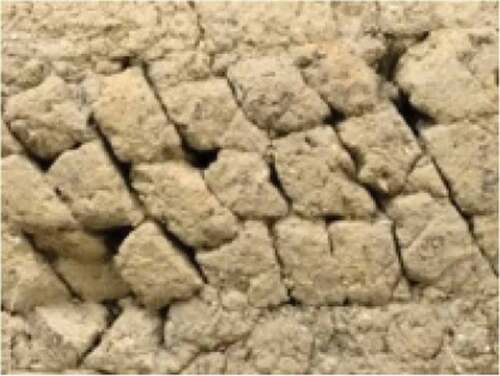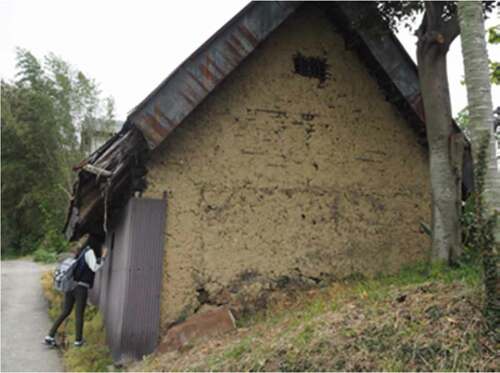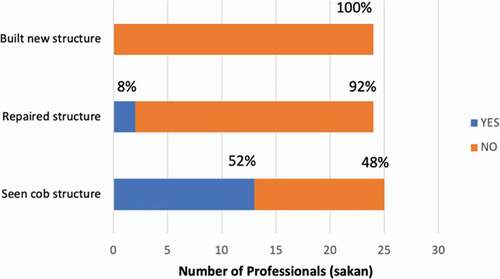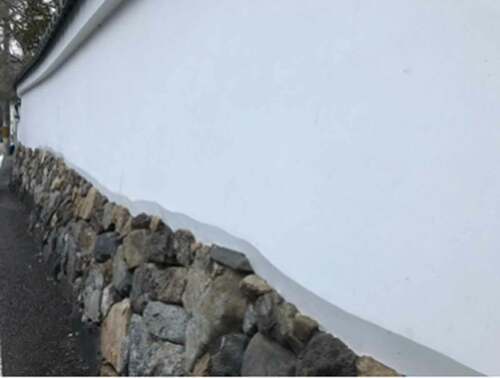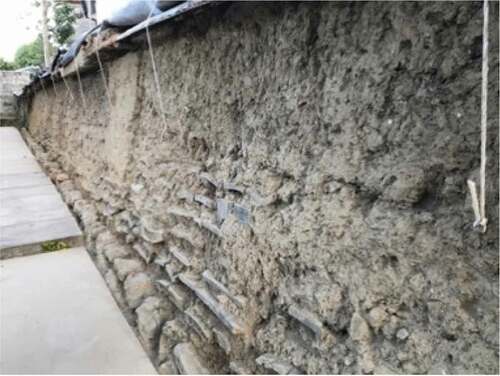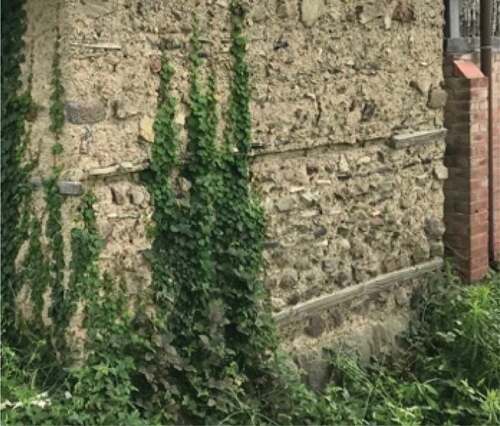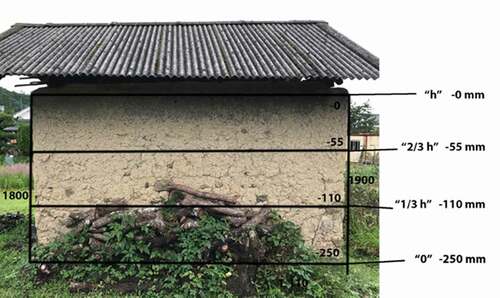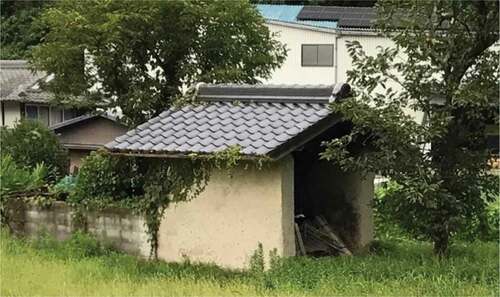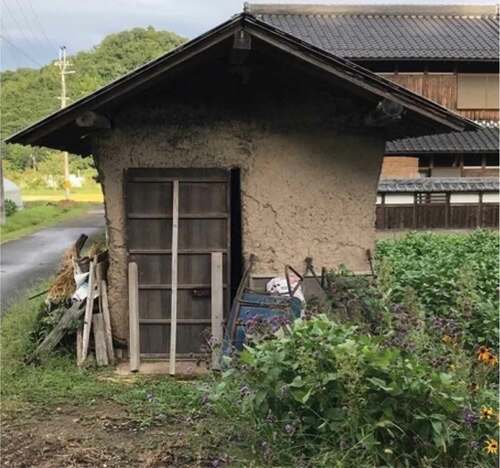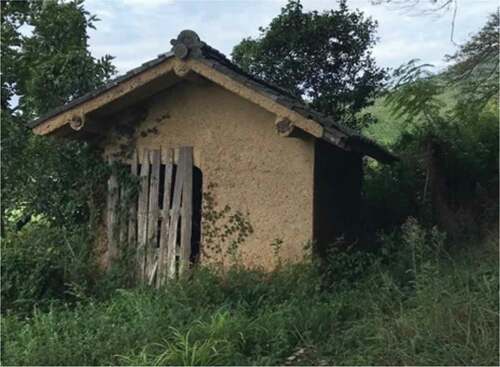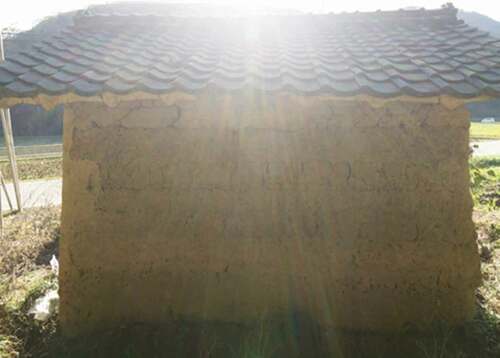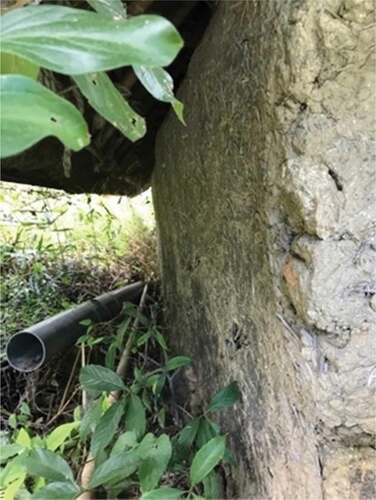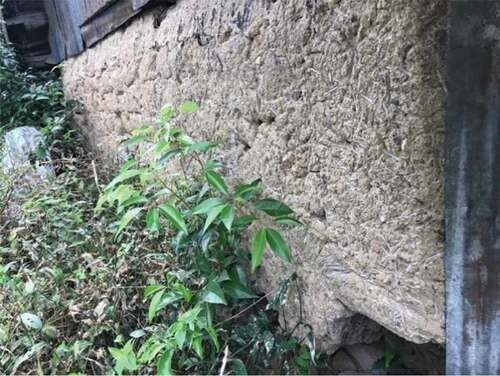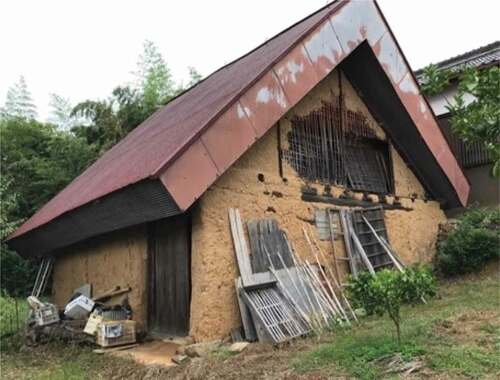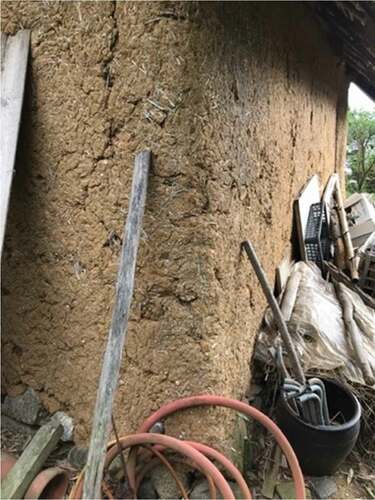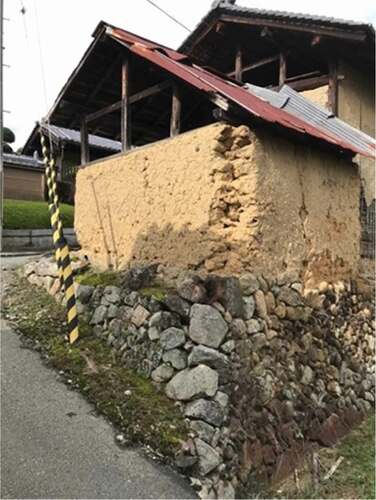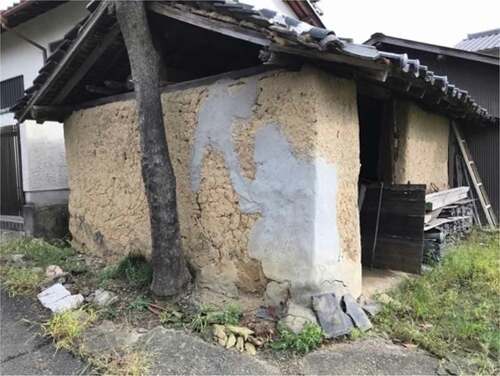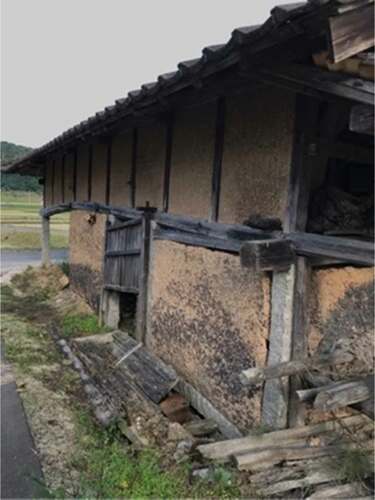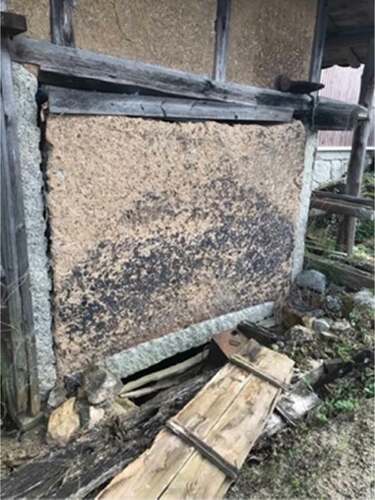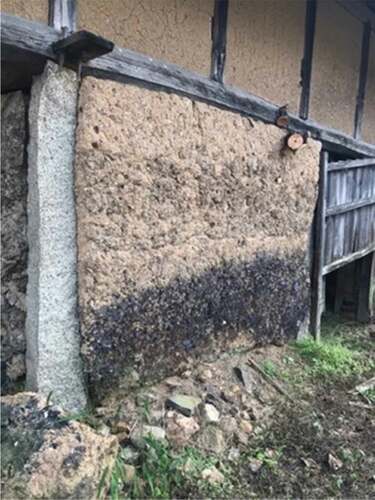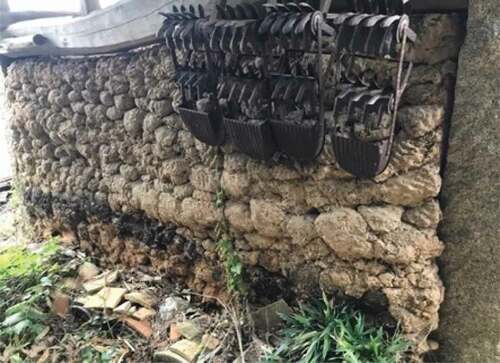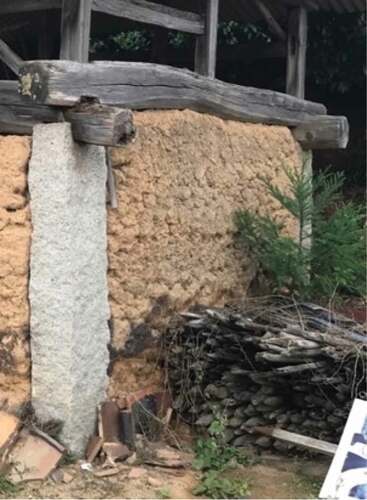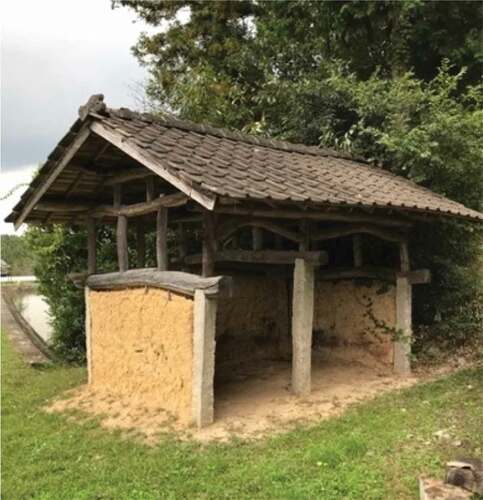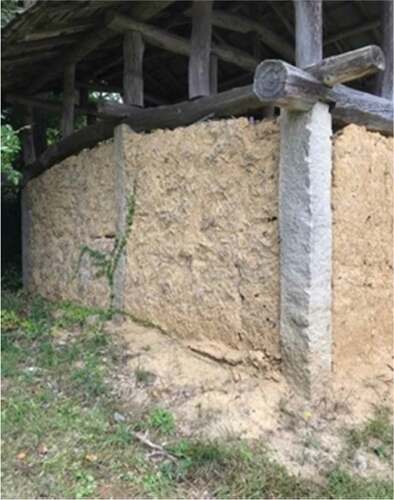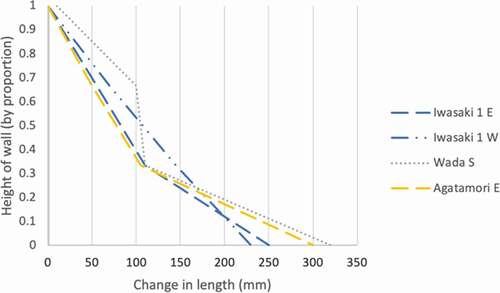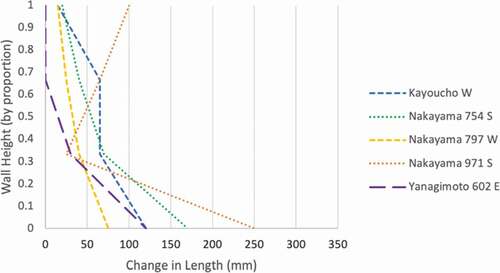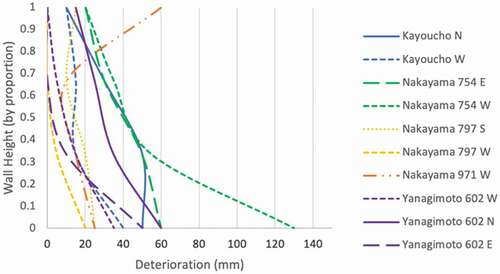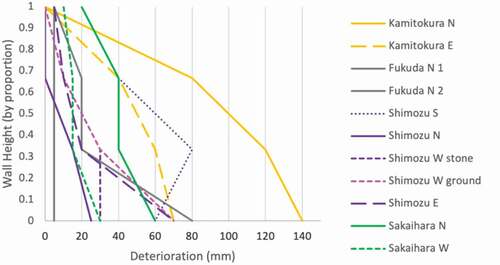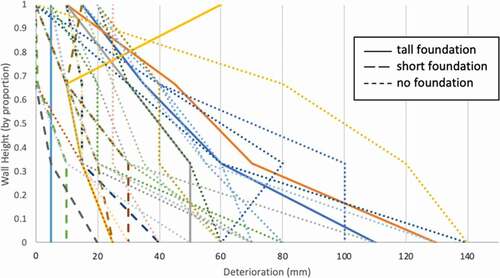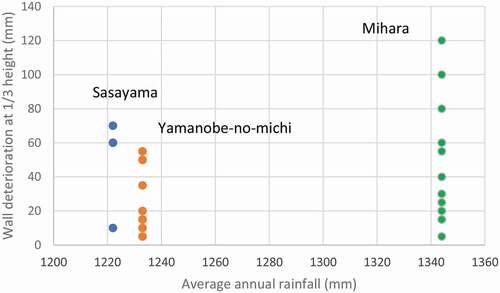Figures & data
Figure 5. A 2017 sakan surface restoration of 100-year-old Kyoto temple perimeter wall reveals cob ball core.

Figure 7. Horyuji perimeter wall replication: (a) shows the laying of freshly made wet adobe bricks. They are being stacked on top of methodically embedded roof tiles; (b) shows the brown coat layer plastered over the bricks after they had dried; (c) shows the finish coat of the professionally built cob perimeter wall. (Photos taken by Miyaoku, J.).
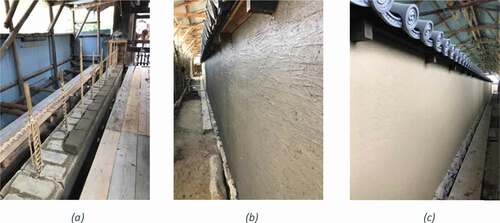
Figure 15. Measuring wall deterioration. (Measurement was taken by drawing a line from the top of the wall to the original location of the footprint of the wall, determined by close observation.).
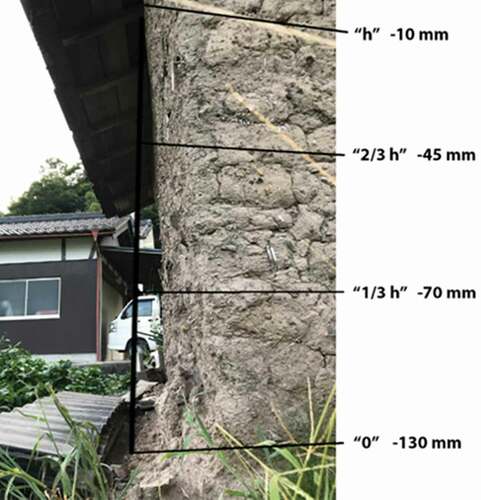
Figure 30. Fukuda in Citation2013 (western-most wall intact) (Google, Citation2013).

Figure 31. Shimozu. The narrow wall seen in the center faces west. The bottom left side has a stone foundation and the bottom right has no foundation. The wall on the right faces south.

Table 1. Sasayama walls measured for changes in length.
Table 2. Yamanobe-no-michi walls measured for changes in length.
Table 3. Sasayama measurements for surface deterioration.
Table 4. Yamanobe-no-Michi measurements for surface deterioration.
Table 5. Mihara measurements for surface deterioration.

